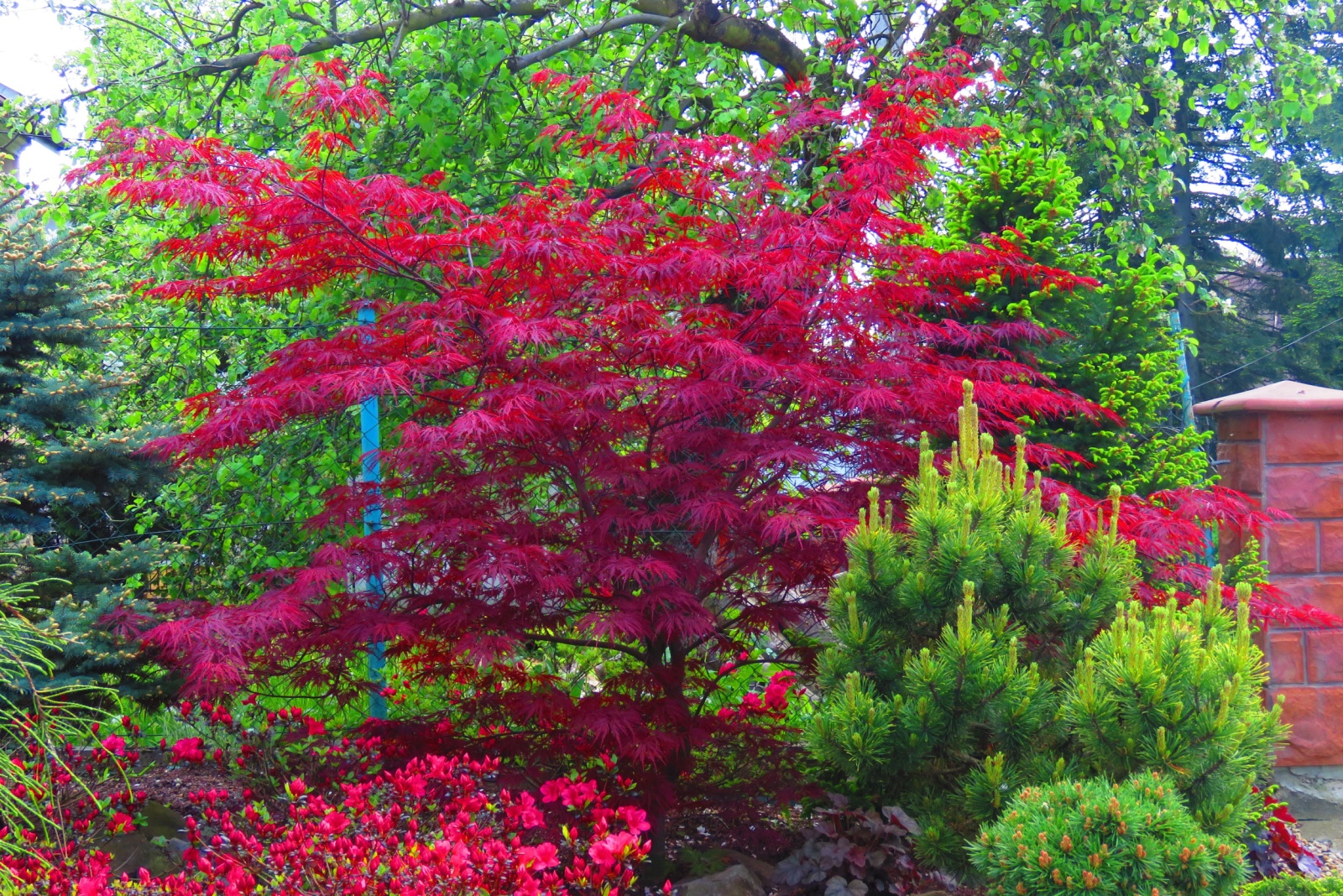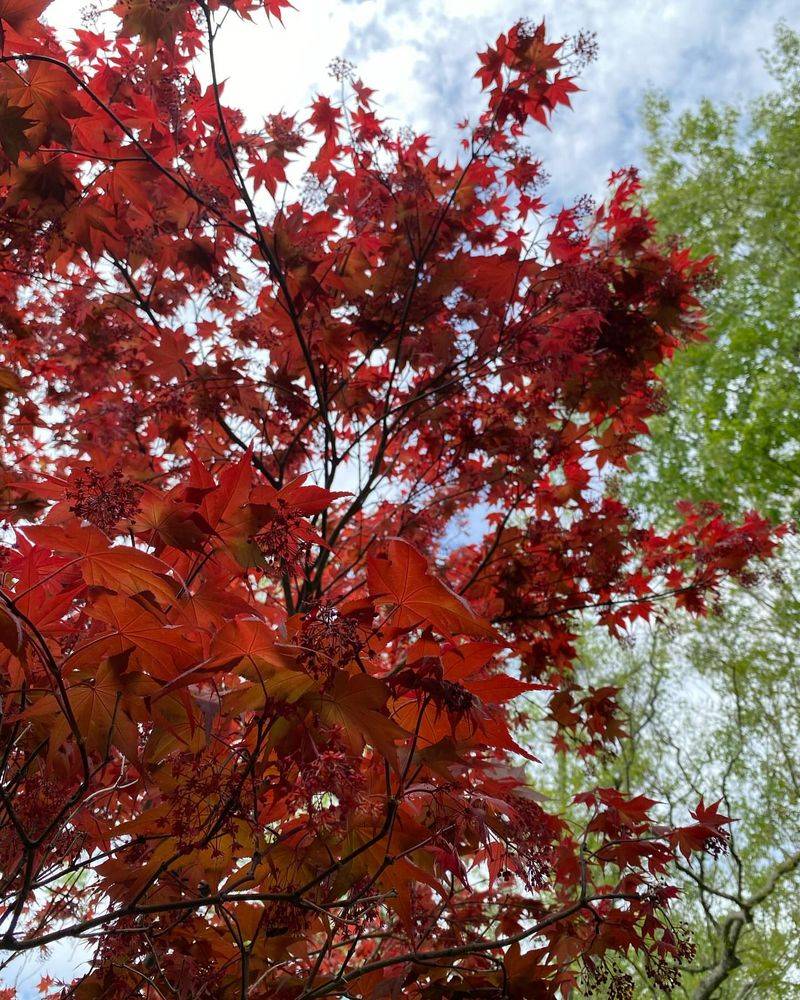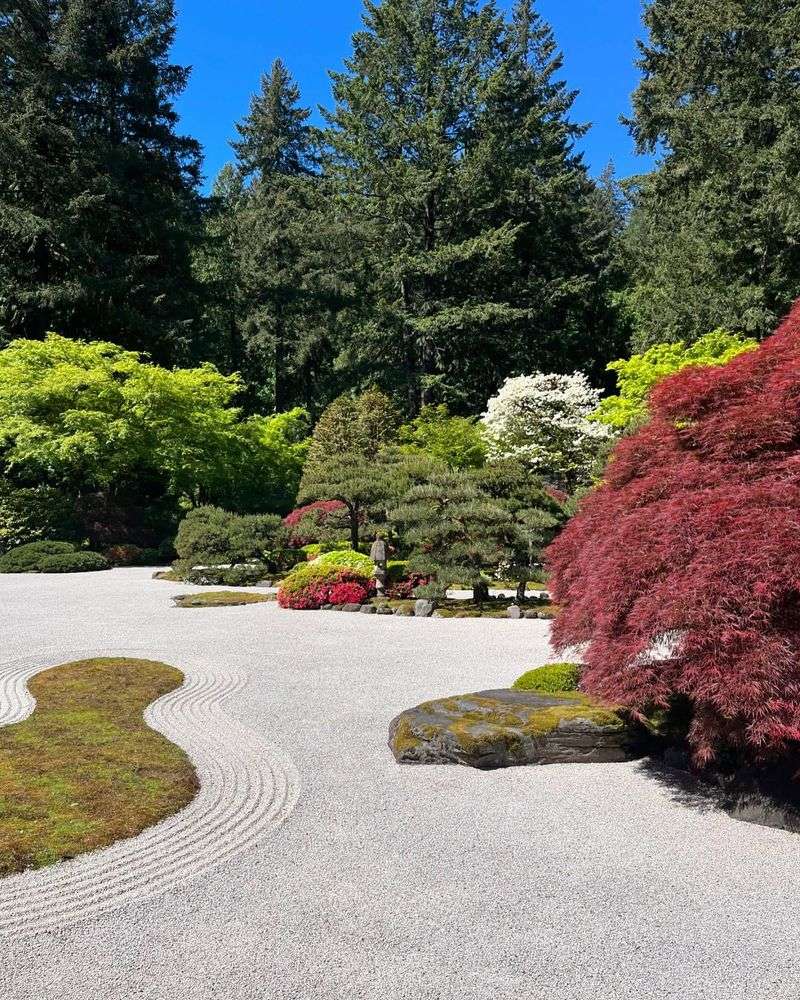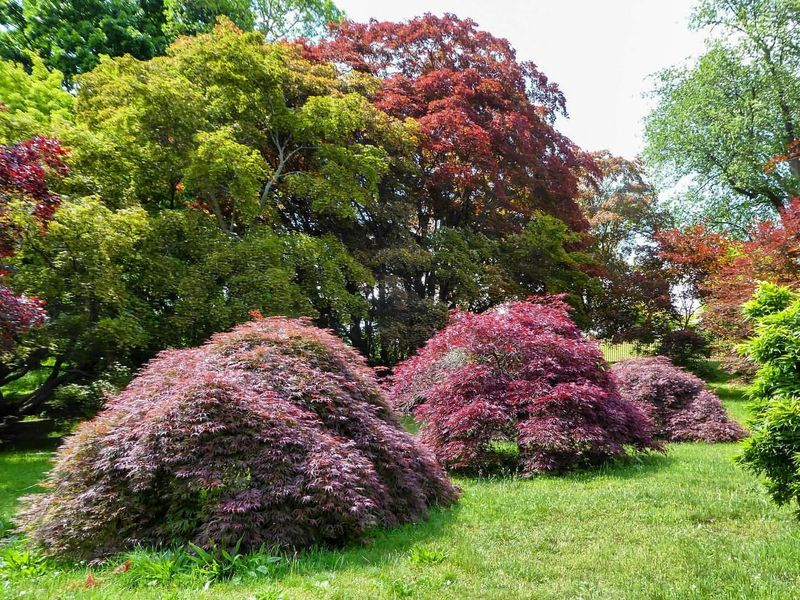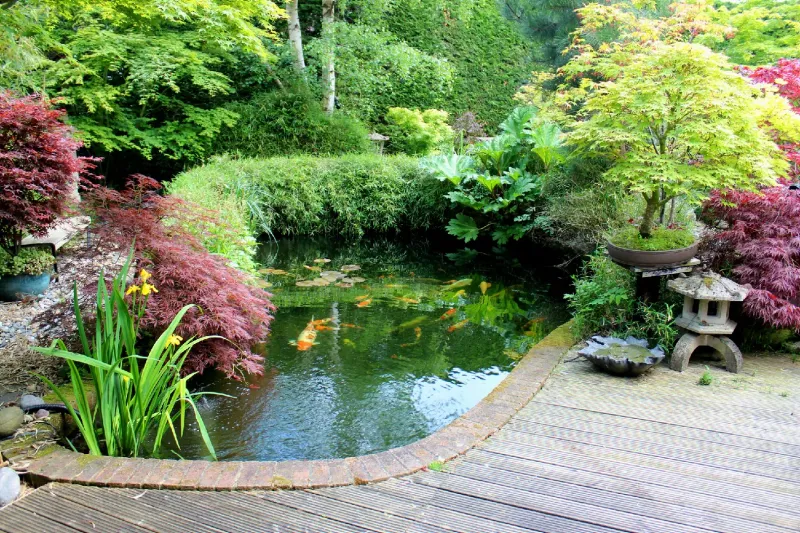Japanese maple trees bring a quiet elegance to Washington gardens, with their lacy leaves and vibrant seasonal shifts. Their colors—fiery reds, soft greens, and golden ambers—make every corner feel curated. Even a single tree can turn a yard into a work of art.
Thanks to Washington’s mild climate and steady rainfall, these ornamental trees thrive with minimal fuss. They’re well-suited to our region’s rhythm of cool winters and gentle summers. It’s no wonder they’ve become a favorite among local gardeners.
Whether you’re working with a wide backyard or a snug patio, Japanese maples adapt beautifully. Their graceful shape and changing hues offer year-round interest. It’s like having a living sculpture that evolves with the seasons.
1. Create Stunning Focal Points
The striking silhouette of a Japanese maple naturally draws the eye, making it perfect for areas where you want visitors to pause and admire. Place one near your entryway or viewed from a favorite window.
In my Tacoma garden, a ‘Bloodgood’ variety stands sentinel by our front steps, greeting guests with its sculptural form. The tree’s presence transforms what was once a forgettable corner.
For maximum impact, choose an open space where the tree can be appreciated from multiple angles. Washington’s overcast days actually enhance the maple’s colors, making them appear more intense against our often gray skies.
2. Pair With Northwest Native Plants
Combining Japanese maples with Washington natives creates a harmonious blend of exotic and local flora. The maple’s refined texture contrasts beautifully with the rugged character of salal, sword ferns, or Oregon grape.
Native plants already adapted to our climate require similar care to Japanese maples, making maintenance simpler. The understory of Douglas firs creates dappled shade that protects sensitive maple varieties.
Last spring, I added low-growing native kinnikinnick around the base of my ‘Coral Bark’ maple. The evergreen groundcover prevents soil erosion during our wet winters while showcasing the maple’s bright stems.
3. Design Year-Round Color Stories
Japanese maples offer more than just autumn brilliance – they’re four-season performers in Washington landscapes. Spring brings fresh chartreuse or burgundy leaves, summer showcases mature foliage, fall delivers fiery displays, and winter reveals artistic branch structures.
Selecting several varieties with different seasonal peaks extends the visual interest. ‘Sango-kaku’ dazzles with coral-red winter branches while ‘Crimson Queen’ offers summer-long burgundy color.
My Seattle neighbor planted three different maples that peak at staggered times, ensuring color from April through November. Even in our grayest months, the trees’ architectural forms provide texture against evergreen backdrops.
4. Enhance Water Features
Nothing complements a pond or stream like the graceful reflection of a Japanese maple. The tree’s delicate foliage seems to dance above still water, doubling its visual impact through mirroring.
Water features in Washington gardens benefit from maples’ scale and form. A weeping variety like ‘Waterfall’ creates a cascading effect that echoes the movement of water itself.
During a garden tour in Bellevue, I was struck by a small ‘Tamukeyama’ maple perfectly positioned beside a rain garden. As our region receives significant rainfall, this pairing not only looked beautiful but helped manage stormwater while creating a tranquil focal point.
5. Master Container Growing
Even without expansive garden space, Washington residents can enjoy Japanese maples in containers on patios and balconies. Dwarf varieties like ‘Sharp’s Pygmy’ or ‘Beni Hoshi’ stay compact while delivering big visual impact.
Container-grown maples need protection from our coldest winter nights. Placing pots against a house wall provides some warmth, while moving truly precious specimens to unheated garages during freezing spells ensures survival.
My condo-dwelling friend in Olympia has maintained a potted ‘Shaina’ maple for eight years. She refreshes the soil annually and uses a slow-release fertilizer formulated for acid-loving plants, keeping it thriving despite limited space.

